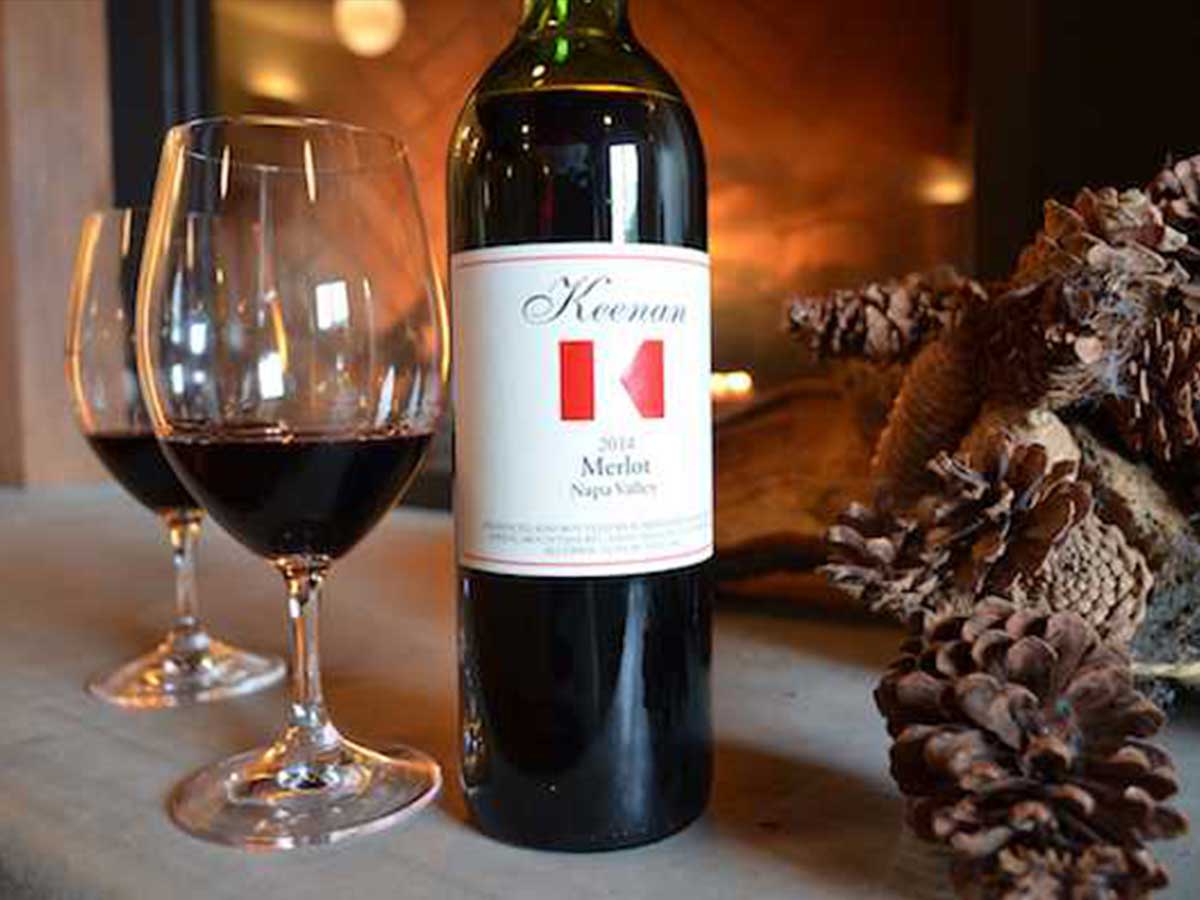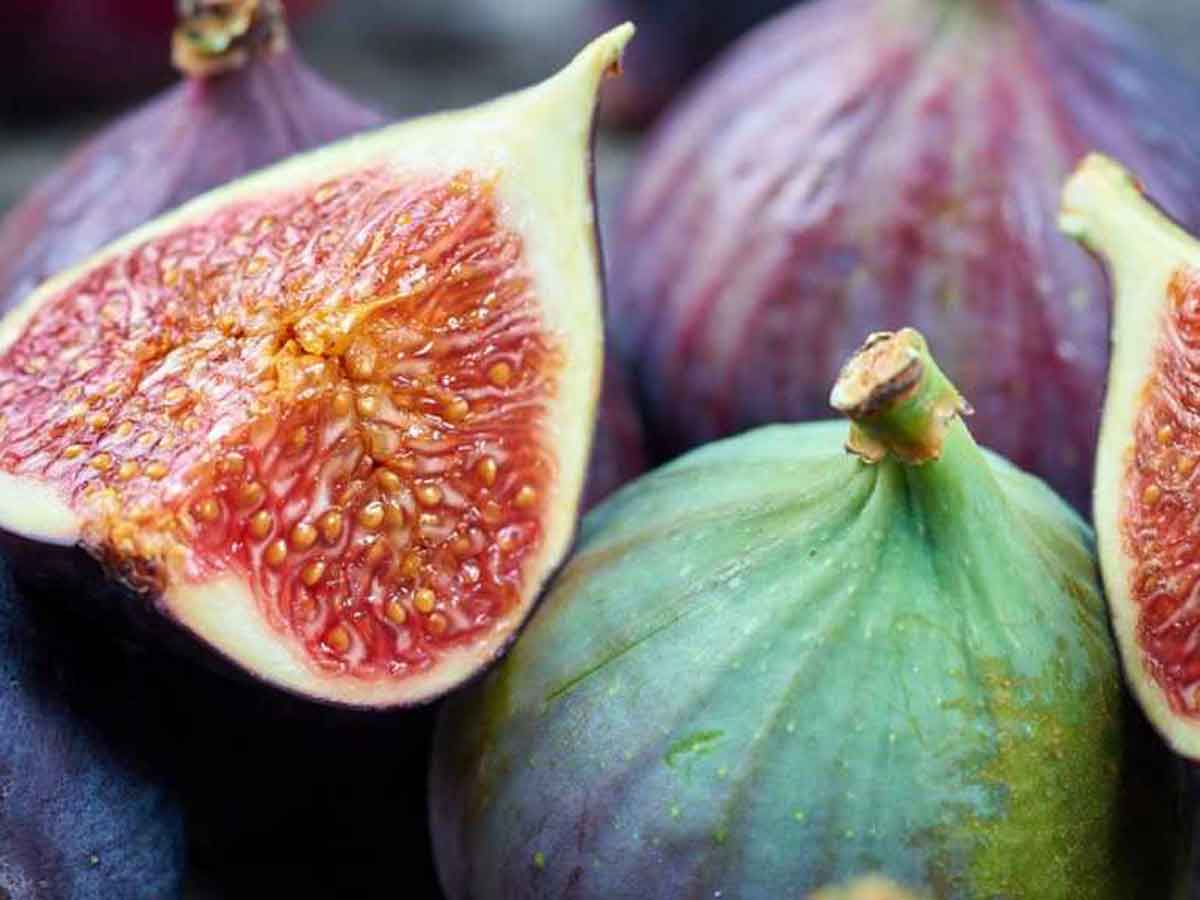Our Stories about
Wine and Food Pairing with Merlot and Figs
April 20, 2017
Merlot 2013 – M Keenan from Keenan Winery on Vimeo. Michael Keenan, owner, talks about the best Merlot of 2013- the greatest created in their family’s history. He explains why & circumstances.
Wine and Food Pairing

Merlot, Fig and Pork: Wine and Food Pairing to Die For
Here, Michael Keenan shares a fig and pork recipe that pairs perfectly with our 2013 Keenan Merlot Napa Valley. We hope that you’ll enjoy this scrumptious meal and beverage combination!
In Michael’s Words:
(Excerpt of the dialogue from this video.)
- This is one of my favorite spots on the property. We’re standing right between my house, the tree house, and the infamous Love Shack, which is a stone throw behind me. And then on this side of the reservoir inside the fence is our garden, which has become to me one of the most important parts of the winery, because I told the team two years ago that it’s not so much about wine anymore; we’ve got that down – it’s all about food and how to pair the wine
- to know what’s really great and having a garden is just such a pleasure.
- That giant, bushy tree in front of the winery is our one tree fig jungle. That usually ripens at the same time the Chardonnay does, so it’s nowhere near ripe, which is unusual. It’s one of the mysteries of Mother Nature to see the figs so hard right now, and it’s a good crop. So, we’ll have a lot of them, but it’s still weeks away from really coming in.
- You know, taking those figs when they’re nice and ripe and you cut the top off, a little scoop, a little bit of fruit out, pack some goat cheese in there, wrap it with pancetta and grill it with boneless loin pork chops that have been marinated in the assessable oil marinade with a little chili flake in it, and then serve that little couscous. And when you pull the figs off when they’re nice and cooked its a little balsamic drizzle, and with Merlot it’s the perfect pairing for harvest lunch.
For those who love figs as much as we do, here are a few other fig recipes we learned from The Spruce:
Bacon-Wrapped Figs Recipe
The idea of leftover bacon-wrapped dates is an urban myth, No one has hard evidence that such a thing has ever happened, that’s how popular these sweet and salty, fruity and meaty finger-food appetizers are. They all get eaten every time, no matter how many there are. They are super easy to make, too. The only tricky part is getting each fig wrapped in a strip of bacon, but that’s something you can do ahead of time, and then just heat them up when guests arrive.
This is probably obvious, but you can scale the recipe to make the number of servings you want: 1 strip bacon to every two figs. Also, please note that in this instance you actually want thin-cut bacon, so it cooks quickly; you want the fig to get warm but not start to fall apart from too much heat.
How many bacon-wrapped figs per person? That limit in a great unknown, but you’ll want to budget at least one per person, although at least two or three is a better bet.
What you’ll need:
- Twelve figs.
- Three to six pieces of thin-cut bacon and/or pancetta.
- How to make it:
- Rinse the figs clean and pat them dry. Trim off any excess stem from them and set them aside.
- Cut each piece of bacon in half lengthwise so you have long, skinny strips of bacon to work with. If you want to use less bacon per fig, cut them in half crosswise as well.
- Wrap each fig with a strip of bacon. The bacon should wrap around several times; have it overlap as little as possible. This method will help the bacon stay on without the help of toothpicks.
- If you want to use shorter bacon strips, you may need to use a toothpick to secure the bacon in place (once the bacon is cooked, it should hold in place on its own, so you can remove the toothpicks as it cooks or before serving, if you like).
You can now cook them one of two ways, on the stove or under a broiler:
- On the Stove: Heat a large frying pan over medium-high heat. Set the bacon-wrapped figs in the pan and cook, turning as each side browns and crisps up, until all sides of the bacon are done to your liking. Remove the figs, setting them on several layers of paper towels to blot off any excess fat before serving them piping hot.
- Under a Broiler: Heat a broiler. Set the figs on a baking sheet. Turn the figs as needed to brown and crisp the bacon on all sides. As above, transfer the figs to several layers of paper towels to blot off any excess fat before serving them piping hot.
NOTE: *If you want to gild the lily, cut a vertical slit in the sides of the figs before wrapping them and insert a peeled almond or a nub of blue cheese or a bit of goat cheese in the center, then proceed with Step #3.
Blue Cheese-Stuffed Figs Recipe
The flavor combination of deeply sweet figs and sharply pungent blue cheese is one of those surprisingly perfect match-ups, where opposites attract like two puzzle pieces. We recommend using a softer, creamier blue cheese like gorgonzola dolce for the textural similarity, but any blue cheese works. Stronger, crumbly ones have a fun effect, too. It’s a great way to use up any small bits of blue cheese you may have leftovers from a party or another recipe.
The figs are best to use when they are very ripe, a little soft rather than firm. If you have figs that aren’t quite ready, use the heating method as that will soften them and add a bit of caramelization.
When you are planning for how many figs to stuff, count about four per person. You can quickly stuff figs as a cold appetizer and serve them that way. Or, you can heat them for a warm appetizer.

What you’ll need:
- Twelve figs.
- One-quarter pound of blue cheese, (i.e., Gorgonzola, Roquefort, Stilton, and/or any variety).
- Canola oil (optional).
- Salt to taste.
- Black pepper to taste.
How to make it:
- Cut a vertical slit into the side of each fig.
- Stuff in about half a teaspoon of blue cheese. Larger figs, obviously, can take in more cheese; smaller figs will hold less.
- If you feel like making a little bit of extra effort, heat a large frying pan over medium-high heat, spray or brush the figs with a neutral-tasting oil like canola, and cook them in the pan, turning them as needed, until lightly browned on all sides. The cheese gets nice and just a bit melted this way, too. As an alternative, you could place them on a broiling pan and broil them briefly to melt the cheese and soften them.
- Figs can be stuffed several hours ahead of time if you like and refrigerated.
- These figs will taste best at room temperature (not chilled), so remove from the refrigerator a half hour before serving if you have prepared them ahead of time.
- For variations, you can add a drizzle of honey or balsamic vinegar (or both) as well. That will transform it from a finger food to one that needs a fork, and be sure to serve it with napkins as there is bound to be some sticky fingers.
- While the blue cheese should add lots of flavors, you can add a few flakes of finishing salt and a dash of freshly ground black pepper for even more pop.
- These blue cheese-stuffed figs pair well with Champagne or any crisp, dry white wine.
Figs in Spiced Syrup Recipe
Fresh figs are notoriously, problematically fragile. By lightly cooking them in a spiced syrup, you transform delicate fresh figs that last but a day or two into heartier, deeper flavored, longer-lasting treats.
Note that this is a particularly lovely way to make use of less-than-supremely-sweet figs, especially brown turkey figs, since they get cooked in a sweet syrup. Serve the figs and their syrup on their own – or, even better in our humble opinion, over ice cream to great effect. They’re also lovely alongside plain, unsweetened yogurt (as breakfast or dessert), spooned onto oatmeal or other hot cereals, or even on pancakes or waffles (I’ve been known to chop them up a bit in that case). These syrup-cooked figs are also lovely as an accompaniment to meats that benefit from a sweet hit like pork, duck, or lamb.
What you’ll need:
- Twelve fresh figs.
- Half a cup of sugar.
- Half a cinnamon stick.
- Two to three whole cloves (optional).
- Two to three whole black peppercorns (optional).
- One to two whole cardamom pods (optional).
- Two allspice berries (options).
- One-quarter teaspoon freshly grated nutmeg (optional).
How to make it:
- Bring the sugar and 1 cup water to a simmer in a medium saucepan (it should be large enough to hold all the figs). Stir as needed to dissolve the sugar. Add the half of a cinnamon stick and whatever other spices you choose to use (or all of them!) and simmer the syrup for about 10 minutes.
- Trim off and discard the stems from the figs; put the figs in the syrup. Simmer about 5 minutes. Don’t cook them too long, or they will completely fall apart.
- Remove the figs from the syrup and let the figs and syrup cool separately for about 15 minutes (if you leave the figs in, they will soften and start to fall apart a bit, so if that sounds good, leave them in!).
- Once slightly cooled off, strain the syrup, discard the spices, and pour the syrup back over the figs.
NOTE: Use the figs warm—they are truly luscious at this point—or store, covered and chilled, for up to about 2 weeks (they may well last longer, but the figs will get softer and softer over time, and they will start to fall apart a bit after that). Put the figs in a glass jar and pour the syrup over them to store in the fridge—and remember to use them sooner rather than later!
